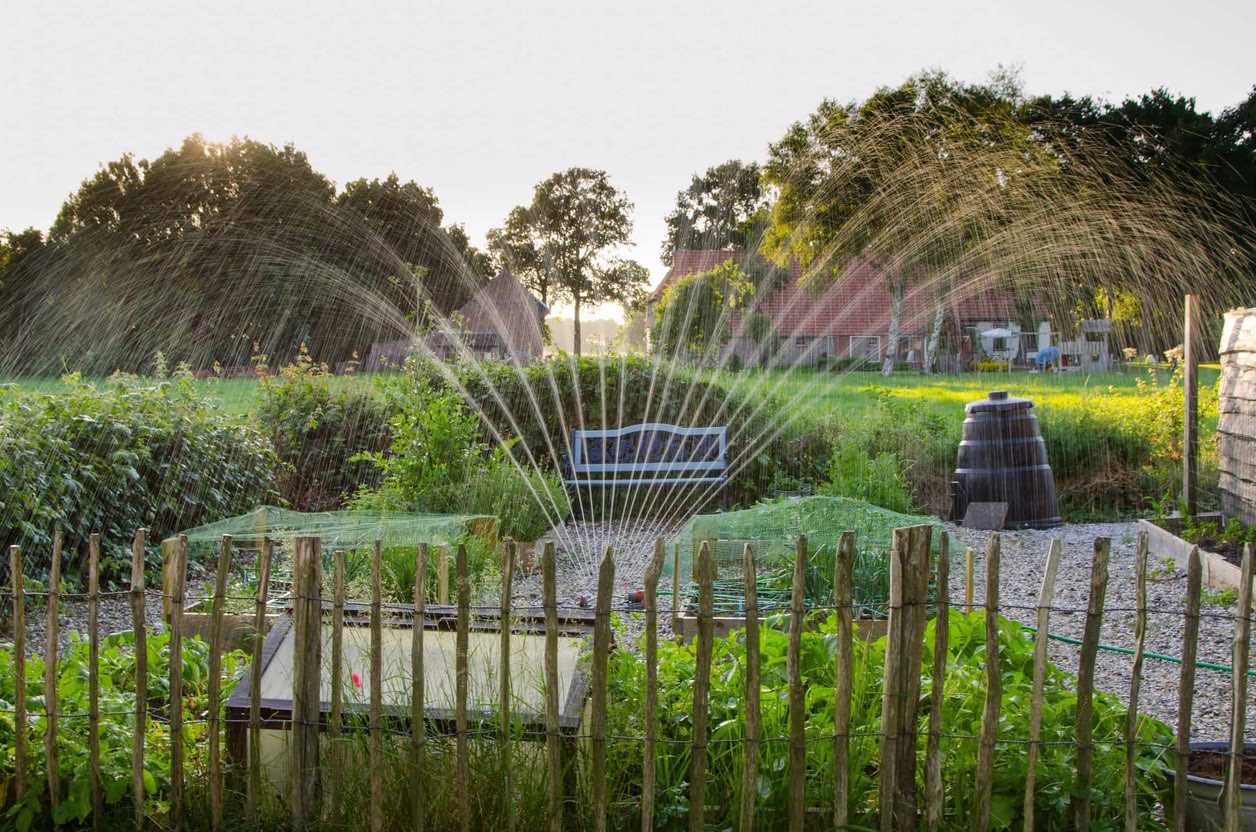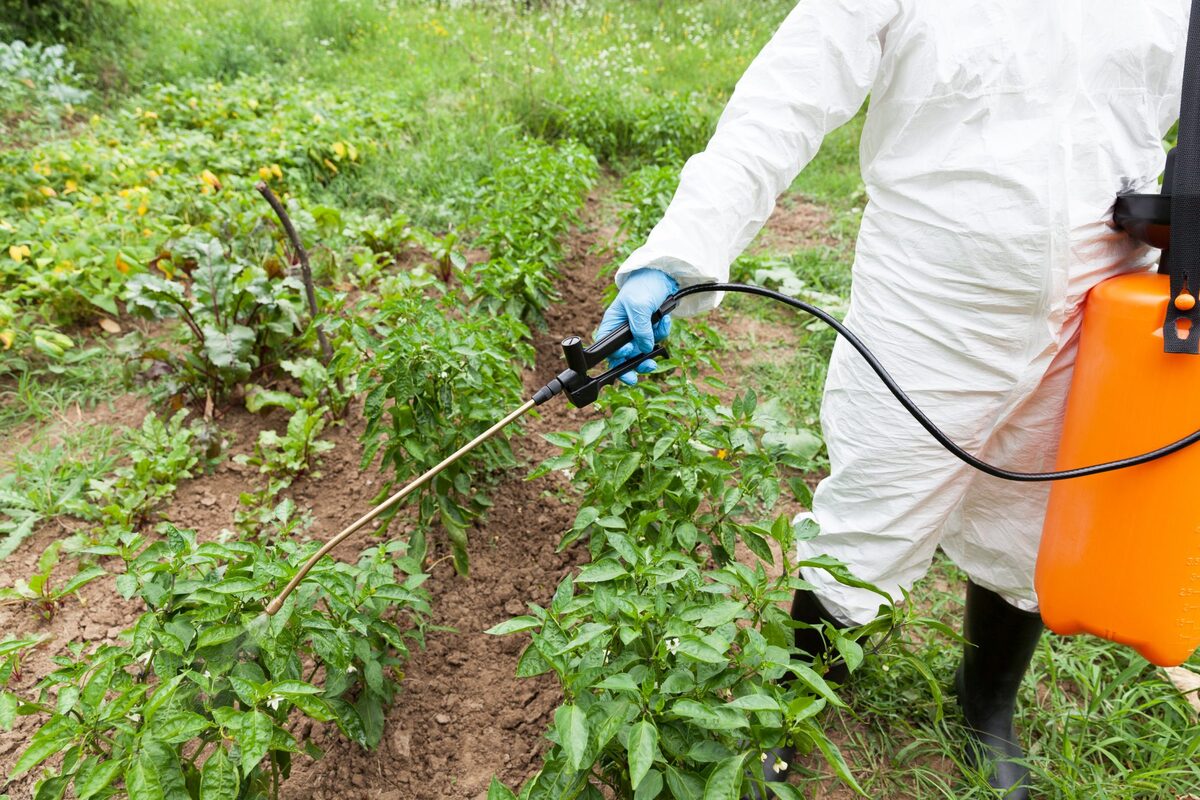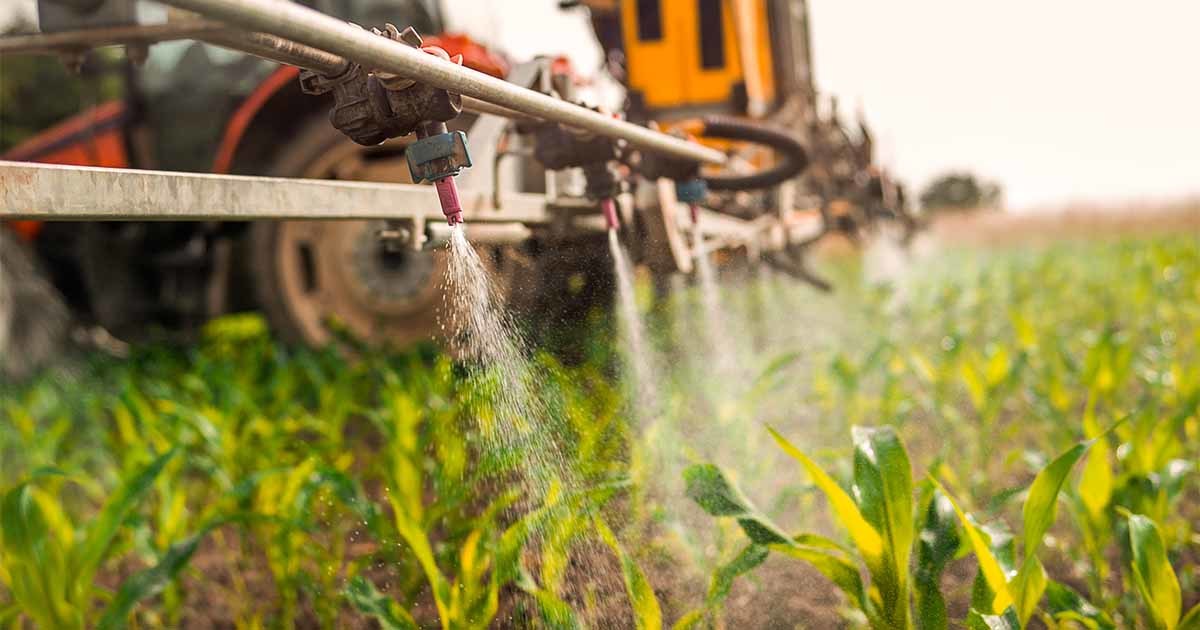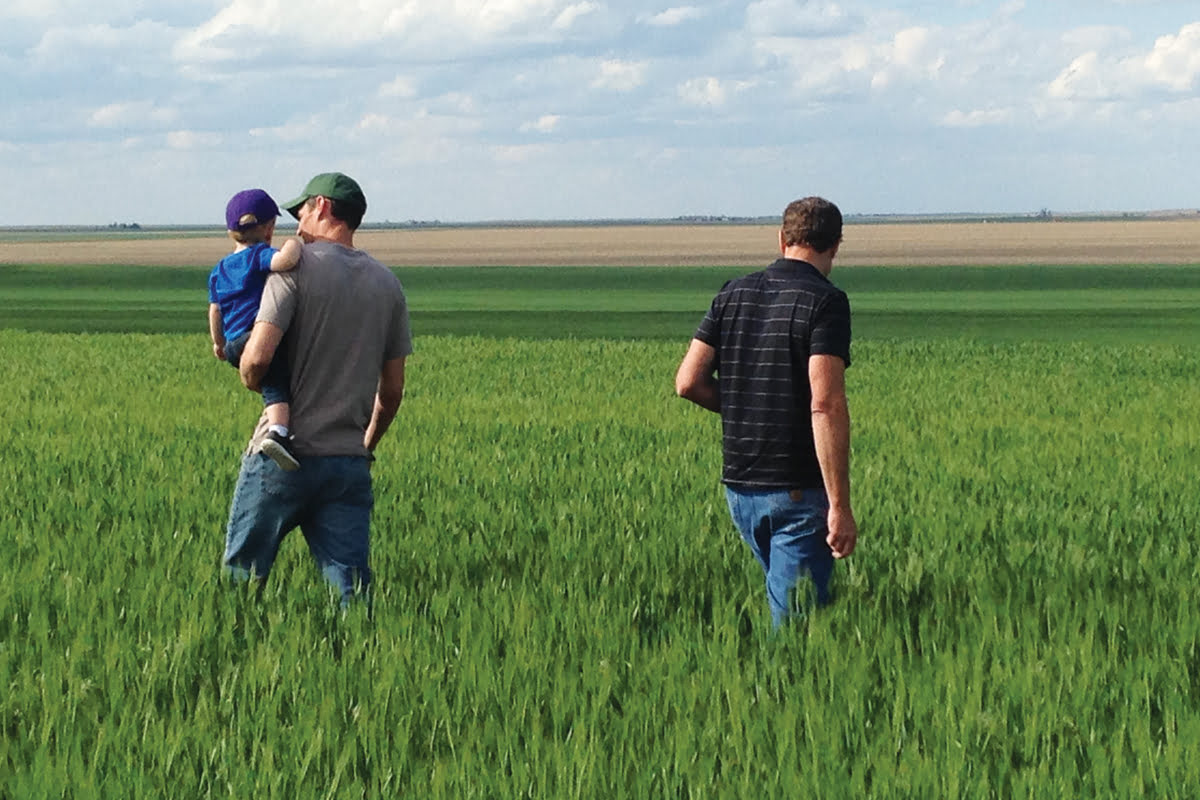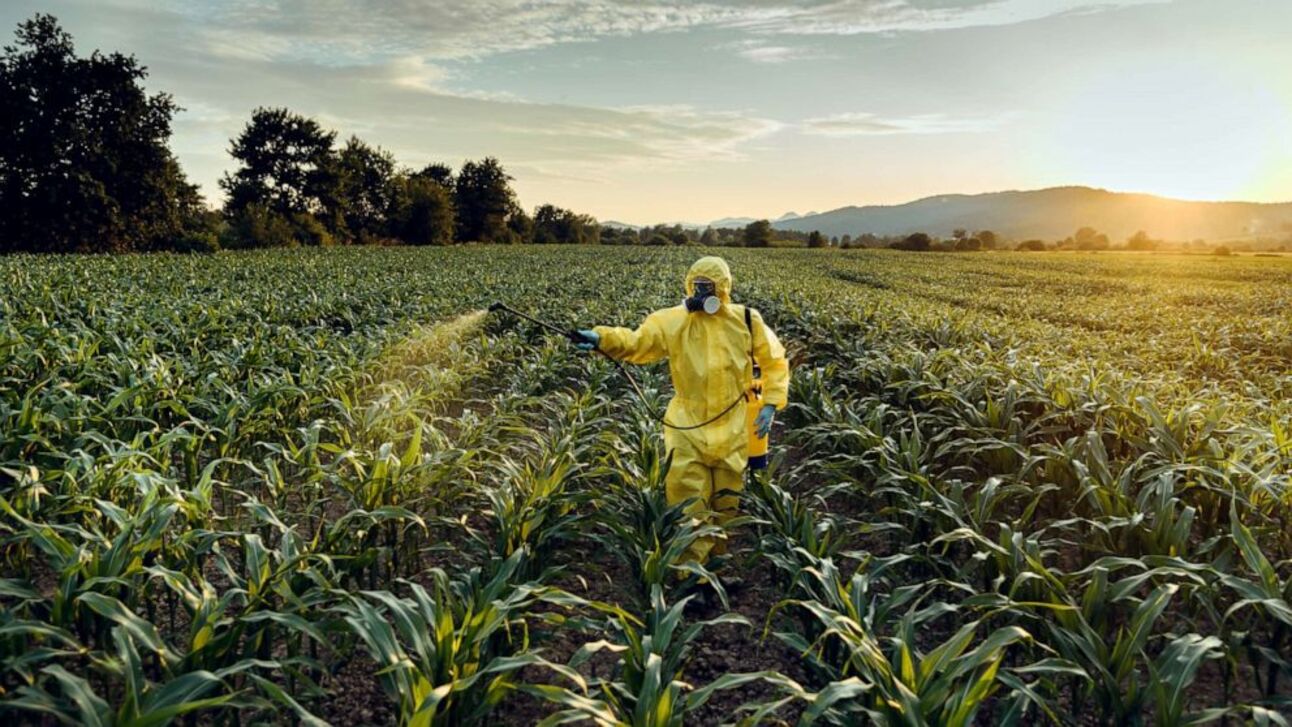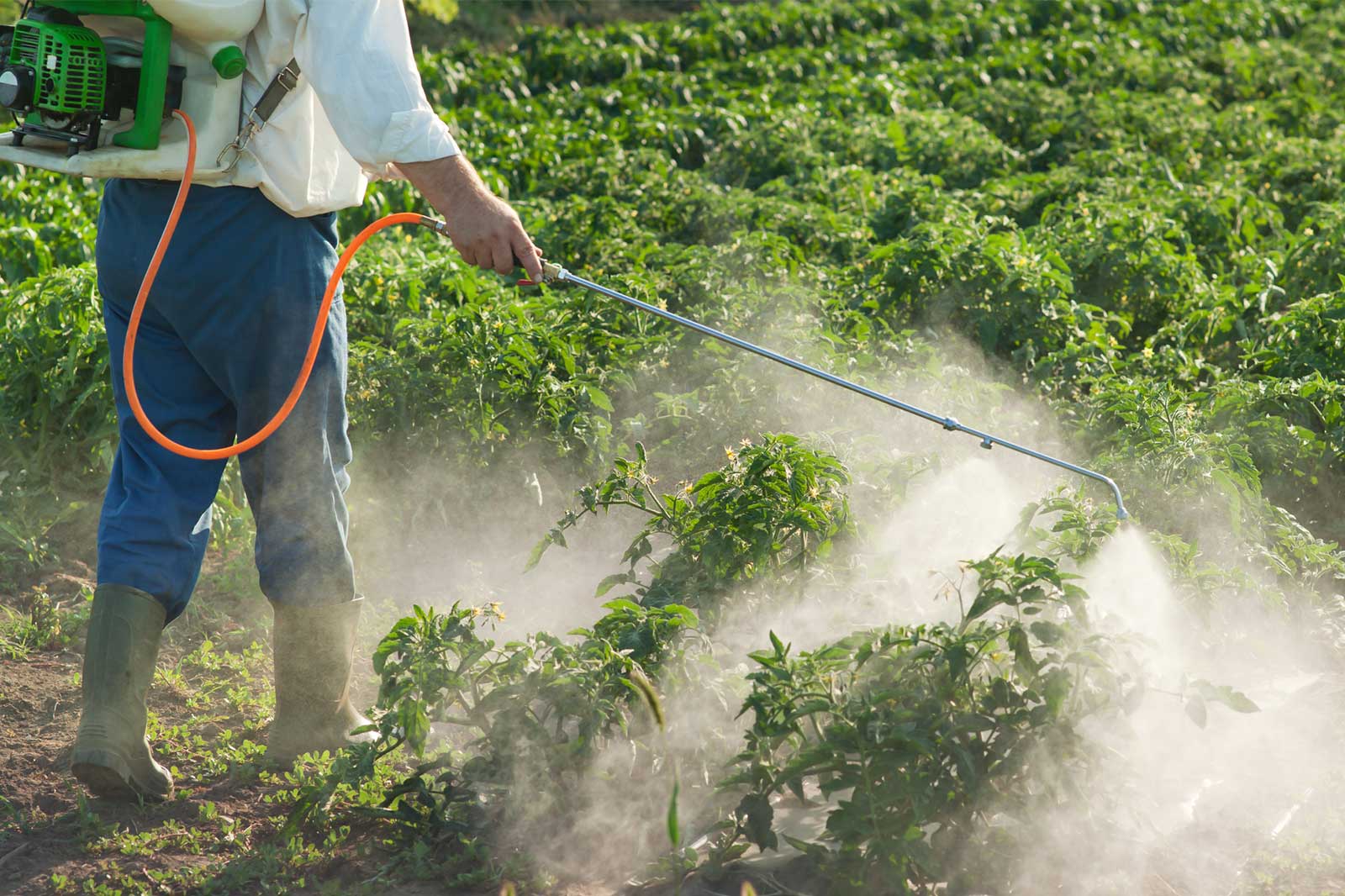Home>Gardening News and Trends>Latest News>What Are Some Alternatives To Using Pesticides


Latest News
What Are Some Alternatives To Using Pesticides
Modified: January 22, 2024
Discover the latest news on alternatives to using pesticides and learn about effective organic methods to protect your plants and the environment.
(Many of the links in this article redirect to a specific reviewed product. Your purchase of these products through affiliate links helps to generate commission for Chicagolandgardening.com, at no extra cost. Learn more)
Table of Contents
Introduction
Welcome to the world of alternative pest control! Pesticides have been widely used for decades to protect crops and eliminate unwanted pests. However, the environmental and health risks associated with their use have raised concerns and prompted the search for safer and more sustainable methods. This has led to the development and implementation of various alternatives to traditional pesticides.
Using pesticides can have detrimental effects on not only the target pests but also on beneficial organisms, including pollinators and natural predators. Furthermore, the residues left by pesticides can contaminate soil, water sources, and even our food. As a result, there is a growing demand for alternative approaches that can effectively manage pests while minimizing harm to the environment and human health.
Fortunately, there are several alternatives that can serve as viable solutions. These alternatives focus on integrated pest management, which involves utilizing a combination of methods to prevent and control pests. Integrated pest management strategies aim to maintain ecological balance while minimizing the reliance on chemical interventions.
In this article, we will explore some of the most effective alternatives to using pesticides. From biological control to crop rotation, organic farming techniques to mechanical control methods, we will delve into the various options available to farmers, gardeners, and pest control professionals.
The goal is to provide both practical and sustainable alternatives to pesticide use, promoting a safer and healthier approach to pest management. By adopting these methods, we can work towards a more harmonious coexistence with nature – one that minimizes the negative impact on the environment and protects the well-being of future generations.
Integrated Pest Management
Integrated Pest Management (IPM) is a comprehensive approach to pest control that focuses on long-term prevention and management. It involves the careful observation of pest populations, understanding their life cycles and natural predators, and implementing a combination of cultural, biological, and chemical control methods.
The first step in an IPM program is to accurately identify the pest and assess its population levels. This can be done through regular monitoring and scouting techniques such as visual inspection, trapping, and pheromone monitoring. By understanding the specific pest pressure, it becomes easier to develop a targeted and effective pest management strategy.
One of the key principles of IPM is to emphasize cultural control methods that can prevent pest infestations in the first place. This includes practices such as proper sanitation, crop rotation, and the use of resistant varieties. By creating an unfavorable environment for pests to thrive, farmers and gardeners can significantly reduce the need for chemical interventions.
Biological control is another important aspect of IPM. This involves the use of natural enemies, such as predators, parasites, and pathogens, to control pest populations. By introducing or conserving these beneficial organisms in the ecosystem, they can help regulate pest numbers naturally. Examples of biological control include releasing ladybugs to control aphids or using Bacillus thuringiensis (Bt) to target specific insect pests.
In situations where pest populations exceed threshold levels, targeted chemical control may be necessary. However, IPM emphasizes the use of selective and least-toxic pesticides as a last resort. Only when other control measures have failed or when significant economic damage is anticipated should chemical interventions be considered.
Regular monitoring and evaluation are crucial components of IPM. By closely tracking pest populations and evaluating the effectiveness of chosen control methods, farmers and gardeners can fine-tune their strategies and make informed decisions. This adaptive approach ensures that pest management practices are constantly optimized for maximum efficacy.
Integrated Pest Management is a holistic approach that provides a sustainable and environmentally friendly solution to pest management. By integrating various control measures and emphasizing prevention, IPM reduces the reliance on pesticides and promotes a more balanced and resilient ecosystem.
Biological Control
Biological control is a natural and eco-friendly approach to pest management that harnesses the power of beneficial organisms to control pests. It involves the intentional use, conservation, and augmentation of natural enemies, such as predators, parasites, and pathogens, to regulate pest populations.
The principle behind biological control is simple: introduce or enhance the presence of organisms that naturally feed on or infect pests, thereby reducing their numbers. This approach has been used for centuries and has proven to be highly effective in managing a wide range of pests.
One common example of biological control is the use of predatory insects. Ladybugs, for instance, feed on aphids, which are known for damaging crops. By releasing ladybugs into infested areas, farmers and gardeners can establish a natural balance by allowing these predators to control the aphid population.
Parasitic wasps are another beneficial organism used in biological control. These tiny wasps lay their eggs inside pest insects, such as caterpillars or grubs. When the eggs hatch, the wasp larvae consume the host from the inside, effectively killing the pest. This method can significantly reduce the numbers of destructive insects without the need for chemical interventions.
Microorganisms, such as bacteria, viruses, and fungi, can also be employed as biological control agents. For example, the soil bacterium Bacillus thuringiensis (Bt) produces toxins that are lethal to specific insect pests, such as caterpillars. Bt formulations can be applied to crops, targeting the pests while having minimal impact on non-target organisms.
Conservation of natural enemies is another important aspect of biological control. By creating or preserving habitats that support beneficial organisms, such as providing flowering plants for pollinators or leaving refuge areas for predators, farmers and gardeners can enhance the natural regulation of pest populations.
It is worth noting that biological control is not a one-size-fits-all solution. The success of this approach relies on careful assessment and implementation. Factors such as climate, pest species, and host availability can influence the effectiveness of biological control methods. Therefore, a thorough understanding of the pest and its natural enemies is essential for optimal results.
Biological control offers a sustainable and environmentally sound alternative to traditional pesticide use. By harnessing the power of nature’s own mechanisms, we can effectively reduce pest populations while preserving the ecological balance of our agricultural systems.
Crop Rotation
Crop rotation is an age-old agricultural practice that involves systematically changing the type of crops grown in a particular area over time. This technique offers numerous benefits, including pest control, improved soil fertility, and reduced reliance on chemical inputs.
The concept of crop rotation is based on the fact that different crops have varying nutrient requirements and vulnerabilities to pests and diseases. By rotating crops, farmers disrupt the life cycles of pests and diseases, making it more challenging for them to establish and thrive in the field.
One of the primary ways in which crop rotation helps with pest control is by breaking the cycle of host-specific pests. For example, certain pests, such as corn rootworms or soybean cyst nematodes, have a strong preference for specific crops. By rotating these crops with non-host plants, pests that rely on those crops for survival are left without a suitable habitat, reducing their numbers over time.
Crop rotation also improves soil health and fertility. Different crops have varying nutrient demands and root systems. By rotating crops, farmers can prevent the depletion of specific nutrients and ensure a more balanced nutrient profile in the soil. Additionally, some crops, known as “green manure” crops, can be specifically grown to add organic matter back into the soil, enriching it and improving its structure.
Furthermore, crop rotation reduces the need for chemical inputs. By disrupting the buildup of pest populations and promoting healthier soil, farmers can minimize the reliance on synthetic pesticides and fertilizers. This not only decreases chemical pollution but also lowers production costs for farmers.
Implementing an effective crop rotation plan requires careful planning and consideration. Factors such as pest and disease pressure, crop compatibility, and market demands need to be taken into account. Farmers must design a rotation schedule that maximizes the benefits while maintaining a profitable and sustainable farming operation.
Overall, crop rotation is a valuable tool in integrated pest management and sustainable agriculture. By diversifying cropping systems, farmers can naturally suppress pests, enhance soil fertility, and reduce dependencies on synthetic inputs. It is a long-term investment that not only benefits agricultural productivity but also contributes to the preservation of our ecosystem.
Organic Farming Techniques
Organic farming is an agricultural approach that relies on natural methods and techniques to produce crops without the use of synthetic chemicals, genetically modified organisms, or irradiation. In addition to promoting environmental sustainability and biodiversity, organic farming also offers effective pest management strategies that can be implemented without resorting to conventional pesticides.
One of the fundamental principles of organic farming is soil health. Healthy soils are the foundation of productive and resilient farms. By focusing on building and maintaining fertile soils, organic farmers create an environment that supports strong and healthy plants. Nutrient-rich soil helps plants develop good natural defenses against pests and diseases.
Organic farmers prioritize the use of organic fertilizers, such as compost and manure, to provide the necessary nutrients for plant growth. These organic inputs slowly release nutrients into the soil, promoting long-term soil fertility and reducing the risk of nutrient imbalances that can attract pest infestations.
Cultural practices play a significant role in organic pest management. Techniques such as proper crop spacing, crop rotation, and intercropping are employed to create conditions that discourage pests. Dense plantings can make it harder for pests to find their preferred host plants, while crop rotation disrupts pest life cycles and reduces pest pressure over time.
Organic farmers also emphasize biological control methods as a primary approach to pest management. By attracting and supporting beneficial insects, such as ladybugs and lacewings, organic farms create a natural balance where pests are kept in check by their natural enemies. Additionally, using trap crops or companion planting can help divert pests away from main crops or attract their natural predators.
In some instances, organic farmers may use natural insecticides derived from plant extracts, minerals, or biopesticides. These substances are specifically approved for use in organic farming and have minimal impacts on the environment and human health.
Though organic farming techniques can be time-consuming and labor-intensive, they offer a more sustainable and eco-friendly approach to pest management. By prioritizing soil health, cultural practices, and biological control, organic farms strive to achieve a harmonious balance between productivity and environmental stewardship.
Companion Planting
Companion planting is a gardening practice that involves growing different plant species in close proximity to enhance their growth and provide mutual benefits. Beyond its aesthetic value, companion planting can also play a vital role in natural pest management by disrupting pest life cycles, repelling pests, and attracting beneficial insects.
The concept of companion planting is based on the interactions between different plants. Some plants have natural repellent properties that deter specific pests. For example, the strong scent of marigolds can help repel nematodes, aphids, and other insect pests. By interplanting these pest-repellent plants with susceptible crops, gardeners can create a natural barrier that protects their plants.
Another technique in companion planting involves attracting beneficial insects. Certain flowering plants, such as alyssum, daisies, and yarrow, produce nectar and pollen that attract beneficial insects like bees, ladybugs, and lacewings. These insects feed on common garden pests such as aphids, caterpillars, and mites, helping to keep pest populations in check.
Some plant combinations can also provide physical benefits. Tall or climbing plants can provide shade for sun-sensitive crops, while groundcover plants can help suppress weeds and preserve moisture in the soil. This interplay between plants creates a more efficient use of available space and resources.
Companion planting requires careful consideration of plant compatibility. Some plants naturally complement each other, while others may compete for resources or release chemicals that inhibit each other’s growth. Research and experimentation can help identify ideal plant combinations for specific pest management goals.
It’s important to note that companion planting is not a guaranteed solution for all pest problems. Its effectiveness may vary depending on factors such as climate, pest pressure, and the specific plant species involved. However, incorporating companion planting techniques into your garden can contribute to a more balanced and pest-resistant ecosystem.
Incorporating companion planting techniques into your gardening or farming practices can provide natural pest management benefits. By strategically pairing plants that complement each other, you can create a harmonious and thriving garden that minimizes the need for chemical interventions.
Mechanical Control Methods
Mechanical control methods involve the physical removal or prevention of pests from plants or their environment. These techniques rely on a variety of strategies that target pests directly, without relying on chemical pesticides.
One commonly used mechanical control method is handpicking. This involves manually removing pests, such as caterpillars, slugs, or beetles, from plants. While time-consuming, handpicking can be an effective method for small gardens or localized infestations. It is essential to regularly inspect plants and remove pests promptly to prevent their population from spreading.
Physical barriers are another effective mechanical control method. This involves using physical structures, such as screens, nets, or row covers, to physically block pests from accessing plants. These barriers create a protective barrier, preventing pests from reaching their desired host plants. Row covers can also provide protection against frost or extreme weather conditions.
Trapping pests is a technique used to monitor and control pest populations. Various types of traps, such as sticky traps, pheromone traps, or light traps, can be employed to attract and capture pests. Trapping allows gardeners to monitor pest activity and population levels. It can also help reduce pest populations by removing a significant number of pests from the environment.
Another mechanical control method is the use of barriers or physical deterrents. This includes techniques such as copper tapes or collars to deter slugs and snails, or reflective mulch to repel aphids and thrips. These barriers create an undesirable environment for pests, discouraging them from feeding on plants.
Cultivation techniques can also be employed as mechanical control methods. Regularly tilling or cultivating the soil can disrupt the life cycles of pests and expose them to harsh conditions. This method can be particularly effective against pests that overwinter in the soil, such as certain nematodes or larvae.
While mechanical control methods can be labor-intensive and require regular monitoring, they offer several advantages. They are environmentally friendly and do not rely on chemical pesticides, reducing the risk of harmful effects on non-target organisms and the ecosystem. Additionally, they provide a more sustainable and long-term approach to pest management.
By incorporating mechanical control methods into pest management strategies, gardeners and farmers can effectively control pests while minimizing the reliance on chemical interventions. These methods also promote a deeper understanding of the ecosystem and the interactions between pests and plants, leading to a more balanced and harmonious gardening or farming practice.
Natural Insecticides
Natural insecticides are derived from plant extracts, minerals, or other naturally occurring substances. They offer an alternative to synthetic pesticides, providing effective pest control while minimizing the negative impact on the environment and human health.
One commonly used natural insecticide is neem oil, derived from the seeds of the neem tree. Neem oil contains compounds that disrupt the feeding and reproductive behaviors of many insects, acting as a repellent and growth regulator. It is particularly effective against a wide range of pests, including aphids, whiteflies, and caterpillars.
Pyrethrin is another natural insecticide derived from the flowers of certain chrysanthemum species. It works by targeting the nervous systems of insects, resulting in paralysis and ultimately death. Pyrethrin is sensitive to sunlight and breaks down quickly, making it a popular choice for use in organic farming.
Spinosad is a naturally occurring compound derived from soil bacteria. It is toxic to a broad range of insect pests, including caterpillars, beetles, and thrips. Spinosad acts upon the insect’s nervous system, causing muscle spasms and paralysis, leading to their demise. It is considered a narrow-spectrum insecticide, targeting only specific pests while sparing beneficial organisms.
Essential oils, such as peppermint, rosemary, or thyme oil, have also gained popularity as natural insecticides. Their strong scents can repel certain pests, disrupt their feeding and mating behaviors, or act as contact toxins. Essential oils are often diluted in water and sprayed onto plants to deter pests.
While natural insecticides are generally considered safer than synthetic pesticides, it is important to note that they can still impact non-target organisms. Beneficial insects, such as bees and ladybugs, may be affected by natural insecticides if not used properly. Therefore, it is crucial to follow label instructions and apply natural insecticides selectively.
One of the advantages of natural insecticides is their shorter residual life compared to synthetic pesticides. They tend to break down more rapidly, reducing the risk of persistence in the environment. Nonetheless, it is still important to use these insecticides judiciously to minimize their impact on ecosystems.
Natural insecticides provide a valuable tool for pest control, particularly in organic farming and gardening. They offer an alternative to synthetic pesticides, allowing for effective pest management while reducing the negative consequences on the environment. Combining natural insecticides with other pest control strategies, such as cultural practices or biological control, can further enhance pest management efforts.
Traps and Barriers
Traps and barriers are effective tools for pest management that rely on physical methods to either capture pests or prevent them from accessing plants. These methods offer targeted and environmentally friendly solutions to control pests without the need for chemical pesticides.
One commonly used type of trap is the sticky trap. Sticky traps are coated with a sticky substance that attracts and captures flying insects, such as aphids, fruit flies, or whiteflies. These traps are placed strategically in the growing area, and the insects get stuck on the adhesive surface when they come in contact with it.
Pheromone traps are another type of trap that utilizes chemical attractants to lure pests. Pheromones are naturally occurring chemicals that insects release to communicate with each other. By mimicking these pheromones, traps can lure and trap specific pests, such as moths or beetles, in order to monitor their activity or reduce population levels.
Light traps, also known as insect zappers, are effective for attracting and killing flying insects that are attracted to light. These traps use ultraviolet light to lure pests into an electrified grid, where they are then killed. Light traps can be particularly useful for large areas or outdoors, where pests such as mosquitoes or gnats can be problematic.
Physical barriers are another form of pest management tool. Mesh screens or netting can be used to cover plants, preventing insects from reaching them. This is especially useful for protecting crops from birds, larger insects, or larger pests like rabbits or deer.
In addition to trapping and blocking pests, physical barriers can also be used to create environmental conditions that deter pests. For example, floating row covers can be placed over plants to create a barrier that protects them from pests while also providing some protection against extreme weather conditions.
Traps and barriers are effective because they target pests directly, capturing or preventing them from causing damage to plants. These methods are particularly useful in integrated pest management approaches, where multiple strategies are employed for effective and sustainable pest control.
However, it is important to note that traps and barriers alone may not completely eliminate pest problems. They should be used in conjunction with other pest control methods, such as cultural practices, biological control, or plant selection, to create an integrated approach.
By implementing traps and barriers as part of a comprehensive pest management plan, farmers and gardeners can reduce their reliance on chemical pesticides and promote a more sustainable and eco-friendly approach to pest control. These methods offer targeted and effective solutions that minimize the impact on the environment and beneficial organisms while safeguarding plants from pests.
Genetic Modification
Genetic modification, also known as genetic engineering or genetically modified organisms (GMOs), is a technique used to manipulate the DNA of plants or organisms to enhance certain characteristics or traits. While controversial, genetic modification can offer potential benefits in pest management by creating crops that are more resistant to pests and diseases.
One of the primary goals of genetic modification in pest management is to develop crops that express insecticidal proteins internally. This is achieved by inserting genes from naturally occurring insecticidal bacteria, such as Bacillus thuringiensis (Bt), into the genome of crop plants. These crops, known as Bt crops, produce their own insecticidal proteins, which are toxic to specific insect pests but harmless to humans and non-target organisms.
Bt crops have been widely cultivated around the world and have been shown to effectively reduce pest damage by targeting pests such as corn borers, cotton bollworms, and Colorado potato beetles. The use of Bt crops has significantly reduced the need for chemical insecticides, resulting in reduced chemical exposure for farmers and reduced environmental impact.
Genetic modification can also be used to develop crops with enhanced resistance to specific diseases or pests. For example, some genetically modified soybean and alfalfa varieties have been engineered to withstand herbicides, allowing for effective weed control without impacting the crop. This trait helps farmers reduce the reliance on mechanical weed control or herbicide applications.
Although genetic modification can offer potential benefits in pest management, there are also concerns and controversies surrounding its use. Critics argue that the long-term effects of genetic modification on human health and the environment are not yet fully understood. There are also concerns about the potential development of resistance in pest populations.
Regulatory bodies in different countries have established rigorous approval processes and labeling requirements for genetically modified crops to ensure safety and transparency. These regulations aim to evaluate the potential risks and benefits of genetically modified crops and ensure that they are safe for consumption and cultivation.
Genetic modification in pest management is a complex and evolving field. It has the potential to offer targeted and efficient solutions for pest control, reducing the reliance on chemical pesticides and minimizing environmental impact. However, ongoing research and comprehensive risk assessments are necessary to ensure the safe and responsible use of genetically modified crops.
Conclusion
As we have explored in this article, there are numerous alternatives to using pesticides for pest management. Integrated Pest Management (IPM) provides a comprehensive approach that focuses on prevention, monitoring, and the use of multiple strategies to control pests effectively. IPM encompasses cultural, biological, and chemical control methods to maintain a balanced ecosystem while minimizing the use of harmful pesticides.
Biological control takes advantage of nature’s own mechanisms by introducing or conserving natural enemies to regulate pest populations. Crop rotation helps break pest cycles and improve soil fertility, while organic farming techniques prioritize soil health, cultural practices, and biological control to minimize reliance on synthetic inputs.
Companion planting, mechanical control methods, traps, and barriers provide targeted and environmentally friendly solutions for pest management. Natural insecticides derived from plant extracts, minerals, or other natural substances offer effective alternatives to synthetic pesticides, reducing environmental impact while controlling pests.
Lastly, genetic modification, while controversial, offers potential benefits in developing crops with enhanced pest resistance. Genetically modified crops, such as Bt crops, produce their own insecticidal proteins, reducing the need for chemical insecticides and minimizing harmful effects on non-target organisms.
It is important to note that every pest management approach has its strengths and limitations. The choice of method should be based on careful consideration of factors such as specific pest species, environmental conditions, and the goals of farmers or gardeners. A combination of techniques tailored to each unique situation is often the most effective approach.
By exploring and adopting these alternative methods to using pesticides, we can promote sustainable and eco-friendly pest management practices. This benefits not only our environment but also the health of our ecosystems, biodiversity, and ultimately, our own well-being. Embracing these alternatives allows us to strike a harmonious balance between effective pest management and the preservation of our natural world.
